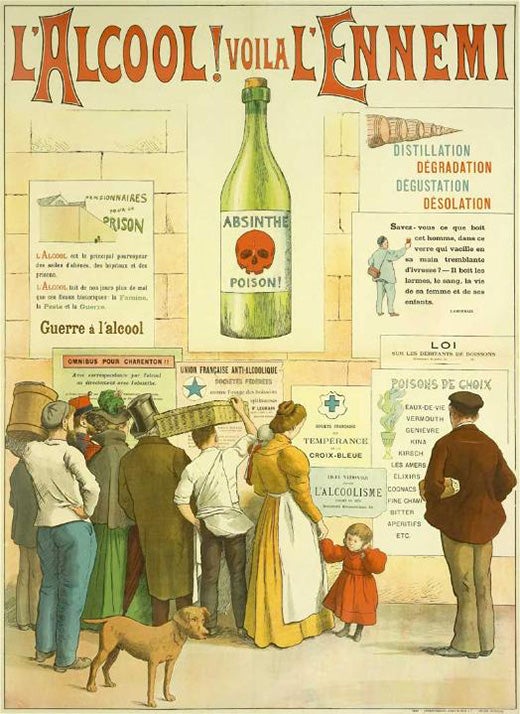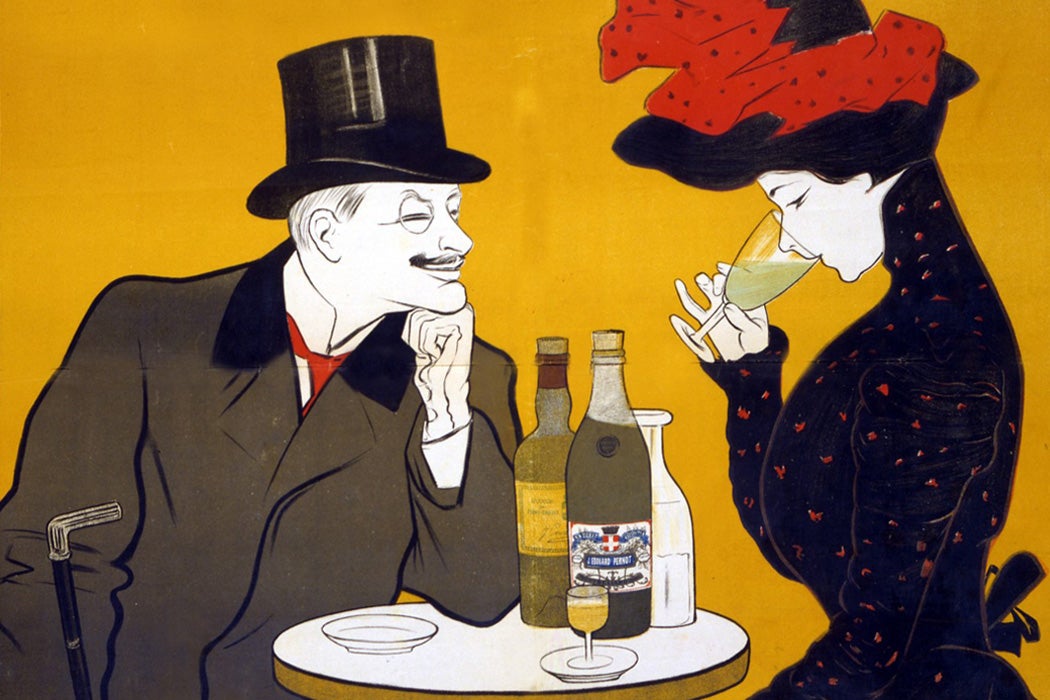If you go out for a fancy cocktail this weekend, you might see absinthe on the menu, but there was a time when it was difficult to find. The drink was banned in France in 1915, when the wormwood used to make it was thought to cause hallucinations and madness. As the historian P.E. Prestwich explained back in 1979, the actual reasons for the ban were more complex.
Soldiers fighting in Algeria first brought absinthe to France. At that time, it was too expensive for most people. But in the 1880s, an infestation of phylloxera pests led to a shortage of wine. Absinthe manufacturers, who had previously used wine alcohol as the base of the drink, switched to cheaper alcohol made from beets or grain. Suddenly, absinthe was cheaper than wine, and many working-class people switched to it.
Absinthe was appealing not just for its low price but because of the ritual attached to it: slowly pouring cold water over a sugar cube into the glass, transforming the aperitif from a bright yellowish green to a cloudy white.
Around the same time, a temperance movement emerged in France, just as it did in the U.S. By 1911, France was the largest consumer of alcohol in the world, and many doctors, politicians, and reformers blamed alcohol for tuberculosis, mental illness, crime, and even labor unrest. Still, most temperance advocates either saw wine as innocuous or preferred to direct their first attacks elsewhere for strategic reasons.
“Wine, that sunny product of French soil and source of considerable wealth, was sacrosanct and was encrusted with national myths about the glory and genius of the French race,” Prestwich writes.

Researchers did link wormwood to madness—though from a modern perspective their work isn’t very persuasive. Between the scientists and the temperance advocates who interpreted their findings for the public, absinthe became known as a prime culprit in the “degeneration” of the French race. At temperance meetings, Prestwich writes, “innocent guinea pigs and rabbits were injected with doses of pure [wormwood] and quickly died a horrible, convulsive death, impressive, if scientifically unsound, testimony to the destructive quality of the drink.”
Another key to the demonization of absinthe producers was that, unlike other alcohol industries, they were largely confined to the Doubs and Rhône regions, and had limited political power.
Weekly Digest
When temperance advocates won the ban on absinthe in 1915, many of them saw it as the first step in a broader anti-drinking campaign. But subsequent efforts to ban other aperitifs fell flat. In fact, Prestwich writes, the “tactical decision to concentrate on absinth [sic] as a first step had the effect of diverting so much attention from other drinks that they were considered innocuous.”
The ban’s main practical effect was forcing manufacturers to slightly alter their aperitif recipes and call them something other than absinthe. And in 2011, nearly a century after the absinthe ban was passed, the country formally lifted it.







